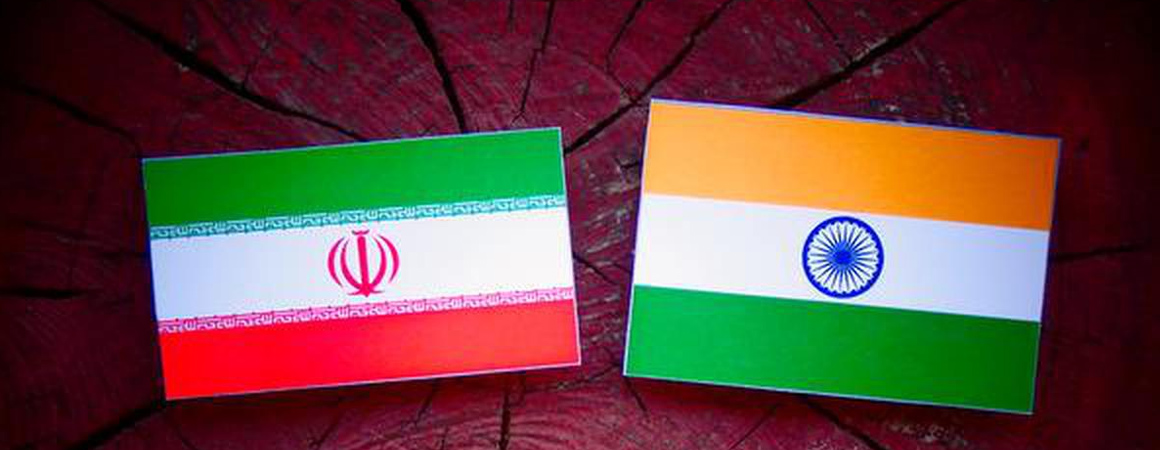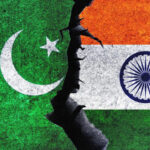Iran is vital for India’s energy security and connectivity plans — but New Delhi is in a bind on how to balance its cooperation with Tehran with its other bilateral ties
At a time when, after the death of 22-year-old Mahsa Amini, Iran’s women have stepped out to demonstrate and free themselves of the brutally enforced hijab, protests that the West has supported, New Delhi has chosen not to speak on the subject. The diplomatic posture is no surprise, as it is in line with both India’s consistent support to the Iranian government, as well as its refusal to interfere in the internal affairs of other countries or comment on their treatment of women or minorities — with the exception of Pakistan, on which the Ministry of External Affairs (MEA) comments quite regularly. For its part, the Iranian government has also maintained a silence over the curbs on hijab in classrooms in Karnataka, although it did issue a demarche over the comments on the Prophet made by a ruling party spokesperson this year, and it sometimes comments on Kashmir.
Suffice it to say that neither the hijab curbs in Karnataka nor the Iranian hijab enforcement measures came up during the meeting this month between Prime Minister Narendra Modi and Iranian President Ebrahim Raisi on the sidelines of the Shanghai Cooperation Organization (SCO) summit in Samarkand on September 16. India and Iran have lived with one another for centuries, said Mr. Modi, highlighting that “ties are marked by historic and civilisational connections, including strong people to people contacts”.
Instead, it is the more delicate tightrope walk the two sides must negotiate over trade, connectivity and energy issues that took centre-stage, areas where India would have much to gain, but many interests to counter-balance if it chooses to improve ties with Iran. In a sense this is India’s catch-22 problem with Iran: each issue of bilateral cooperation comes with a new set of problems in other bilateral relations.
At the SCO, for example, the most salient cooperation Mr. Modi sought to project were India-Iran connectivity initiatives through Chabahar port. During the brief period between the signing of the Joint Comprehensive Plan of Action (JCPOA) between Iran and the U.S. and other countries (China, France, Germany, Russia, the U. K. and the European Union) in 2013, and the U.S. walk-out from the nuclear deal in 2018 under the then President, Donald Trump, India had made great progress in plans to develop the Chabahar warm-water port in Iran’s south-eastern Sistan Baluchestan province. In 2016, India signed an MoU with Iran, with a contract for 10 years, to develop and operate two terminals and five berths to handle cargo at the port. In addition, India signed MoUs to develop the rail route from Chabahar to Zahedan to facilitate cargo transport to Afghanistan. Even in 2018, when Mr. Trump walked out of the JCPOA, the U. S. built a “carve-out” for India to operate the port for Afghanistan.
A narrowing focus
However six years later, India’s sights have narrowed, and shifted focus. India has promoted and developed one berth at the Shahid Beheshti Terminal with much difficulty, given the U. S. sanctions on Iran. Tired of waiting, Iran went ahead and developed the railway line to Zahedan without Indian help, given India’s hesitation in working with the Iranian contractor Khatam Al-Anbiya, which is owned by the Iranian Revolutionary Guard Corps (IRGC). And the only Indian goods transport to Afghanistan since the Taliban took over Kabul, a consignment of 50,000 metric tonnes (MT) of wheat, is being sent via road through Pakistan. Progress on Chabahar has been so slow that of the $8 billion in connectivity projects reportedly offered by Iran in 2015, India’s investment till date is $85 million, while a promised LoC of $500 million remains largely unfulfilled. At the SCO sidelines, Mr. Modi and Mr. Raisi “underscored” the importance of the Chabahar project, said Foreign Secretary Vinay Kwatra, and spoke of their desire to link Chabahar to the International North-South Transport Corridor (INSTC) that runs from Iran to Russia via Central Asia, and build connectivity further west for India.
However, here lies the eternal conundrum for New Delhi: increasing its footprint via Chabahar runs into trouble with U.S. sanctions again at a time India-U. S. ties are at their closest. In addition, there are questions on just how India’s ties with Israel, especially its participation in the I2U2 initiative involving Israel, the U. S. and the UAE, with each of the others inimical to Iran, would fare if India pours more resources into the Chabahar route. On the other hand, not increasing its cooperation with Iran and building on possibilities offered by Chabahar would mean India losing the connectivity race to its western flank entirely, as well as its plans to circumvent Pakistan. Already, the China-Pakistan Economic Corridor (CPEC) via Gwadar port is linking up to projects across Central Asia. The Trans-Afghan Railroad corridor agreement between Pakistan, Afghanistan and Uzbekistan has been finalised, and links up to projects of China’s Belt and Road Initiative (BRI) across the region. In addition, the $400 billion China-Iran connectivity project of 2020 could upend India’s plans inside Iran as well.
Slippery slope on oil imports
A similar catch-22 situation has already hurt India on the issue of oil imports from Iran, an issue raised by Mr. Raisi during the meeting with Mr. Modi. Until 2018, Iranian sweet crude made up 11% of India’s oil imports, and was a preferred source of light, discounted oil. However, the U. S. government’s threat of sanctions ended India’s oil imports from Iran (and Venezuela) entirely. Today, after calling the U. S.’s bluff on sanctions over imports of Russian oil, the Modi government has some incentive to also consider restoring Iranian oil imports. In Washington this week, External Affairs Minister S. Jaishankar said quite dramatically that the cost of procuring oil in the wake of the Ukraine war and Western sanctions was “breaking the backs” of poor Indians. One easy solution would be to restore the Iranian supplies, which Iranian officials have made clear they would be only too happy to supply. However, given India’s delicate balance in relations in West Asia, restarting Iranian oil could not only attract a new threat of U. S. sanctions, but also rupture ties with India’s other suppliers, Saudi Arabia, Iraq and now Russia.
The third catch-22 dilemma over trade with Iran is tied to the first two areas of connectivity and energy. After all, if India commits to increasing trade with Iran, it will have to improve connectivity and also increase its intake of oil, as the rupee-rial mechanism would only work if both India and Iran have goods to export to each other. After India’s decision to “zero out” Iranian oil, bilateral trade dropped from $17 billion (2017-18) to just over $2 billion (2020-21). Restoring trade will necessitate both restarting energy imports from Iran, and investing more in connectivity.
A ray of hope on Iran nuclear deal
One small ray of hope for New Delhi’s complex calculations came this week from the reopening of talks between Iran and International Atomic Energy Agency negotiators in Vienna, who are discussing the return of their investigators, a first step towards walking back towards the JCPOA and the U. S.’s re-entry into the nuclear deal. The E. U., which is acting as coordinator between Tehran and Washington, has circulated a “final text” of negotiations which could eventually lead to a breakthrough. However, the E. U. and the U. S. are also considering fresh sanctions against Iran over the death of Mahsa Amini, and resulting Internet shutdowns by the Iranian government, which could in turn become a deal breaker for Tehran amidst nuclear negotiations — proof if any was required, that in international politics, catch-22 dilemmas are everywhere.
India’s catch-22 dilemma on relations with Iran
Iran is vital for India’s energy security and connectivity plans — but New Delhi is in a bind on how to balance its cooperation with Tehran with its other bilateral ties
At a time when, after the death of 22-year-old Mahsa Amini, Iran’s women have stepped out to demonstrate and free themselves of the brutally enforced hijab, protests that the West has supported, New Delhi has chosen not to speak on the subject. The diplomatic posture is no surprise, as it is in line with both India’s consistent support to the Iranian government, as well as its refusal to interfere in the internal affairs of other countries or comment on their treatment of women or minorities — with the exception of Pakistan, on which the Ministry of External Affairs (MEA) comments quite regularly. For its part, the Iranian government has also maintained a silence over the curbs on hijab in classrooms in Karnataka, although it did issue a demarche over the comments on the Prophet made by a ruling party spokesperson this year, and it sometimes comments on Kashmir.
Suffice it to say that neither the hijab curbs in Karnataka nor the Iranian hijab enforcement measures came up during the meeting this month between Prime Minister Narendra Modi and Iranian President Ebrahim Raisi on the sidelines of the Shanghai Cooperation Organization (SCO) summit in Samarkand on September 16. India and Iran have lived with one another for centuries, said Mr. Modi, highlighting that “ties are marked by historic and civilisational connections, including strong people to people contacts”.
Instead, it is the more delicate tightrope walk the two sides must negotiate over trade, connectivity and energy issues that took centre-stage, areas where India would have much to gain, but many interests to counter-balance if it chooses to improve ties with Iran. In a sense this is India’s catch-22 problem with Iran: each issue of bilateral cooperation comes with a new set of problems in other bilateral relations.
At the SCO, for example, the most salient cooperation Mr. Modi sought to project were India-Iran connectivity initiatives through Chabahar port. During the brief period between the signing of the Joint Comprehensive Plan of Action (JCPOA) between Iran and the U.S. and other countries (China, France, Germany, Russia, the U. K. and the European Union) in 2013, and the U.S. walk-out from the nuclear deal in 2018 under the then President, Donald Trump, India had made great progress in plans to develop the Chabahar warm-water port in Iran’s south-eastern Sistan Baluchestan province. In 2016, India signed an MoU with Iran, with a contract for 10 years, to develop and operate two terminals and five berths to handle cargo at the port. In addition, India signed MoUs to develop the rail route from Chabahar to Zahedan to facilitate cargo transport to Afghanistan. Even in 2018, when Mr. Trump walked out of the JCPOA, the U. S. built a “carve-out” for India to operate the port for Afghanistan.
A narrowing focus
However six years later, India’s sights have narrowed, and shifted focus. India has promoted and developed one berth at the Shahid Beheshti Terminal with much difficulty, given the U. S. sanctions on Iran. Tired of waiting, Iran went ahead and developed the railway line to Zahedan without Indian help, given India’s hesitation in working with the Iranian contractor Khatam Al-Anbiya, which is owned by the Iranian Revolutionary Guard Corps (IRGC). And the only Indian goods transport to Afghanistan since the Taliban took over Kabul, a consignment of 50,000 metric tonnes (MT) of wheat, is being sent via road through Pakistan. Progress on Chabahar has been so slow that of the $8 billion in connectivity projects reportedly offered by Iran in 2015, India’s investment till date is $85 million, while a promised LoC of $500 million remains largely unfulfilled. At the SCO sidelines, Mr. Modi and Mr. Raisi “underscored” the importance of the Chabahar project, said Foreign Secretary Vinay Kwatra, and spoke of their desire to link Chabahar to the International North-South Transport Corridor (INSTC) that runs from Iran to Russia via Central Asia, and build connectivity further west for India.
However, here lies the eternal conundrum for New Delhi: increasing its footprint via Chabahar runs into trouble with U.S. sanctions again at a time India-U. S. ties are at their closest. In addition, there are questions on just how India’s ties with Israel, especially its participation in the I2U2 initiative involving Israel, the U. S. and the UAE, with each of the others inimical to Iran, would fare if India pours more resources into the Chabahar route. On the other hand, not increasing its cooperation with Iran and building on possibilities offered by Chabahar would mean India losing the connectivity race to its western flank entirely, as well as its plans to circumvent Pakistan. Already, the China-Pakistan Economic Corridor (CPEC) via Gwadar port is linking up to projects across Central Asia. The Trans-Afghan Railroad corridor agreement between Pakistan, Afghanistan and Uzbekistan has been finalised, and links up to projects of China’s Belt and Road Initiative (BRI) across the region. In addition, the $400 billion China-Iran connectivity project of 2020 could upend India’s plans inside Iran as well.
Slippery slope on oil imports
A similar catch-22 situation has already hurt India on the issue of oil imports from Iran, an issue raised by Mr. Raisi during the meeting with Mr. Modi. Until 2018, Iranian sweet crude made up 11% of India’s oil imports, and was a preferred source of light, discounted oil. However, the U. S. government’s threat of sanctions ended India’s oil imports from Iran (and Venezuela) entirely. Today, after calling the U. S.’s bluff on sanctions over imports of Russian oil, the Modi government has some incentive to also consider restoring Iranian oil imports. In Washington this week, External Affairs Minister S. Jaishankar said quite dramatically that the cost of procuring oil in the wake of the Ukraine war and Western sanctions was “breaking the backs” of poor Indians. One easy solution would be to restore the Iranian supplies, which Iranian officials have made clear they would be only too happy to supply. However, given India’s delicate balance in relations in West Asia, restarting Iranian oil could not only attract a new threat of U. S. sanctions, but also rupture ties with India’s other suppliers, Saudi Arabia, Iraq and now Russia.
The third catch-22 dilemma over trade with Iran is tied to the first two areas of connectivity and energy. After all, if India commits to increasing trade with Iran, it will have to improve connectivity and also increase its intake of oil, as the rupee-rial mechanism would only work if both India and Iran have goods to export to each other. After India’s decision to “zero out” Iranian oil, bilateral trade dropped from $17 billion (2017-18) to just over $2 billion (2020-21). Restoring trade will necessitate both restarting energy imports from Iran, and investing more in connectivity.
A ray of hope on Iran nuclear deal
One small ray of hope for New Delhi’s complex calculations came this week from the reopening of talks between Iran and International Atomic Energy Agency negotiators in Vienna, who are discussing the return of their investigators, a first step towards walking back towards the JCPOA and the U. S.’s re-entry into the nuclear deal. The E. U., which is acting as coordinator between Tehran and Washington, has circulated a “final text” of negotiations which could eventually lead to a breakthrough. However, the E. U. and the U. S. are also considering fresh sanctions against Iran over the death of Mahsa Amini, and resulting Internet shutdowns by the Iranian government, which could in turn become a deal breaker for Tehran amidst nuclear negotiations — proof if any was required, that in international politics, catch-22 dilemmas are everywhere.






NO COMMENT